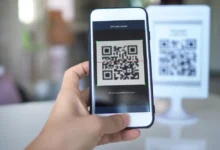USB-C Video Cable Compatibility: Your Ultimate Guide

With advancements in technology, USB-C video cables have become the go-to solution for connecting modern devices, whether for work, play, or content creation. Known for their versatility, USB-C cables provide a simplified way to connect to monitors, projectors, laptops, and even smartphones, but understanding their compatibility can sometimes be challenging. This guide will break down everything you need to know about USB-C video cable compatibility, helping you make the most of your tech setup.
Understanding USB-C Video Cable Compatibility
You may wonder does usb c support video. USB-C video cables are designed to support a wide range of devices, including laptops, tablets, smartphones, monitors, and even projectors. What sets USB-C apart is its ability to carry both data and video signals through a single connection, which minimizes the need for multiple cables and adapters. Unlike traditional ports, which often limit users to specific connection types, USB-C is compatible with a variety of protocols, such as HDMI, DisplayPort, and Thunderbolt. This adaptability makes USB-C a universal standard, but it’s essential to understand that not all USB-C cables or ports are created equal.
Compatibility with various devices largely depends on the USB-C port type on the device. Some USB-C ports support only data transfer and charging, while others are capable of transmitting video. To identify if your device supports USB-C video output, look for a “DP” or “DisplayPort” icon next to the port, as this indicates that it can handle video signals. Devices with Thunderbolt 3 or 4 support tend to offer the highest level of compatibility, providing faster data transfer and higher video resolutions.
How USB-C works with various devices
USB-C with HDMI and DisplayPort Compatibility
One of the standout features of USB-C is its compatibility with HDMI and DisplayPort, two of the most common video standards. HDMI is widely used in TVs, projectors, and some monitors, while DisplayPort is prevalent in high-end monitors and gaming setups. USB-C’s ability to connect to both of these standards via adapters or native support means users have a flexible solution that adapts to various display requirements.
To connect a USB-C device to an HDMI display, you’ll typically need a USB-C to HDMI adapter, which allows you to bridge the gap between the different standards. These adapters support resolutions up to 4K, with some even handling 8K, making them ideal for high-definition presentations and media. For DisplayPort compatibility, USB-C devices can connect directly using USB-C to DisplayPort cables, providing a seamless connection without the need for additional adapters. This straightforward compatibility makes USB-C an appealing choice for professionals who work in various environments, whether on high-resolution monitors or home theater setups.

USB-C and Thunderbolt: Enhanced Compatibility and Speed
Thunderbolt is another standard compatible with USB-C, offering enhanced speed and performance. Thunderbolt 3 and 4 use the same USB-C connector, which enables fast data transfer rates up to 40 Gbps, as well as video output. This makes Thunderbolt-compatible USB-C ports particularly powerful, as they support multiple functions through a single cable, such as data transfer, charging, and video output.
Devices with Thunderbolt 3 or 4 are especially beneficial for users who need to connect to high-performance peripherals like external GPUs, high-resolution monitors, or fast storage devices. Thunderbolt’s high bandwidth allows you to connect multiple 4K monitors or a single 8K monitor, providing flexibility for those who rely on top-tier visuals, whether for gaming, content creation, or professional design work. However, it’s essential to confirm that both the cable and device support Thunderbolt to achieve these enhanced capabilities.
Mobile Device Compatibility with USB-C
One of the revolutionary aspects of USB-C is its compatibility with mobile devices, including smartphones and tablets. Many modern smartphones now feature USB-C ports, which allow them to connect to larger displays or projectors for presentations, media streaming, or even gaming. With the help of a USB-C to HDMI adapter, you can easily project your smartphone’s display onto a TV or monitor, enhancing the viewing experience for photos, videos, or even mobile games.
Tablets, especially those used for creative work, benefit significantly from USB-C’s video compatibility, as users can connect to larger monitors for drawing, editing, and design tasks. Some tablets even offer “desktop mode” features when connected to external displays via USB-C, providing a PC-like experience that enhances productivity. This compatibility with mobile devices makes USB-C ideal for those who want to maximize the versatility of their tech, whether for work or leisure.
Universal Compatibility for a Simplified Setup
USB-C’s universal compatibility makes it a valuable choice for anyone looking to streamline their setup. Unlike other connection standards that often require multiple cables and adapters, USB-C’s multifunctionality allows it to handle video, data, and charging through one cable. This simplification reduces clutter and creates a cleaner workspace, benefiting both productivity and aesthetics.
The universal nature of USB-C also means that users can easily switch between different devices without needing to change cables. For instance, a single USB-C video cable could connect a laptop to a monitor in the office, a projector in a conference room, or even a home entertainment system. This ease of switching between devices and setups makes USB-C a practical choice for people with diverse needs, from business professionals to home users.
Future-proofing with USB-C Video Cables
With many tech companies, including Apple, Google, and Dell, increasingly adopting USB-C as a primary connection standard, choosing USB-C video cables is a forward-thinking decision. USB-C’s ongoing development, such as the introduction of USB4 and enhanced Power Delivery features, means that investing in USB-C now ensures you’re ready for future advancements. USB4 is expected to bring even higher data and video transfer capabilities, enhancing USB-C’s role as a universal connector.
This forward compatibility means that by choosing USB-C video cables, you won’t have to frequently upgrade your cables or adapters to stay compatible with new devices. As USB-C continues to dominate the tech landscape, devices from laptops to smartphones will increasingly support it, making it an excellent long-term choice.
Conclusion
USB-C video cables offer an ideal solution for anyone seeking versatility, compatibility, and future-proofing in their tech setup. From high-definition visuals and lightning-fast data transfer to universal compatibility with HDMI, DisplayPort, and Thunderbolt, USB-C streamlines connectivity across devices. Whether you’re a professional working with high-end monitors, a gamer looking for immersive visuals, or simply seeking a simplified setup, USB-C provides an all-in-one connection solution. Embracing USB-C video cables today ensures your setup will remain adaptable, efficient, and ready for tomorrow’s tech advancements.







